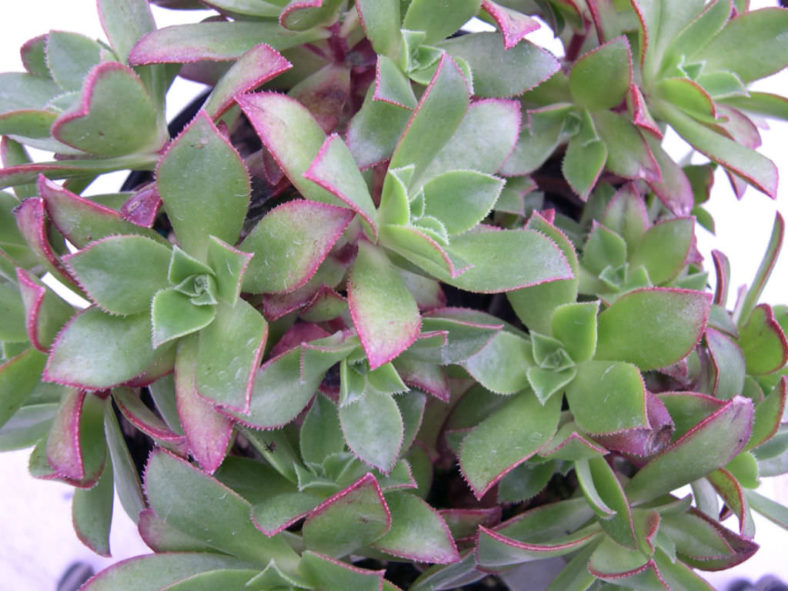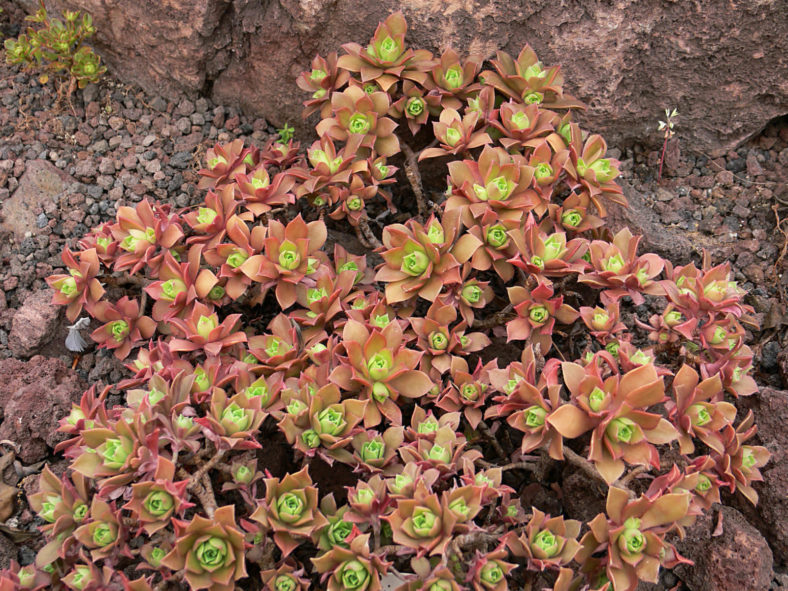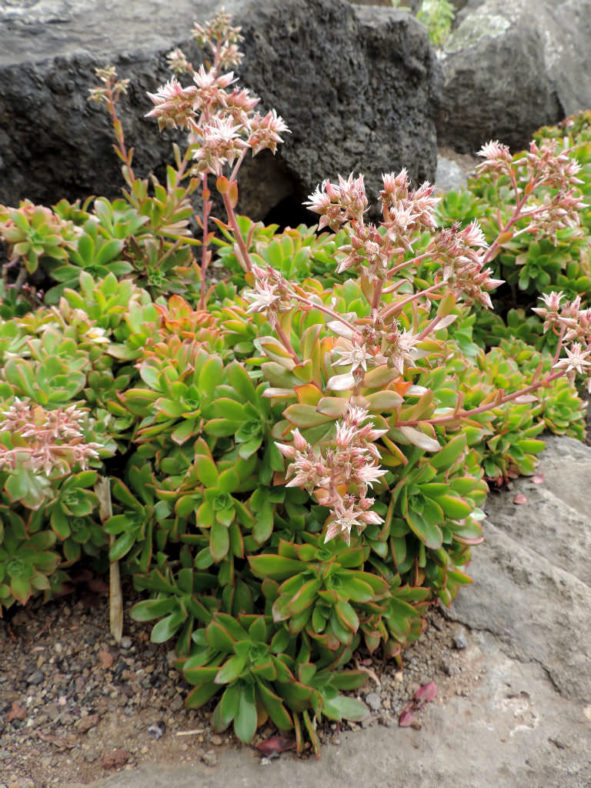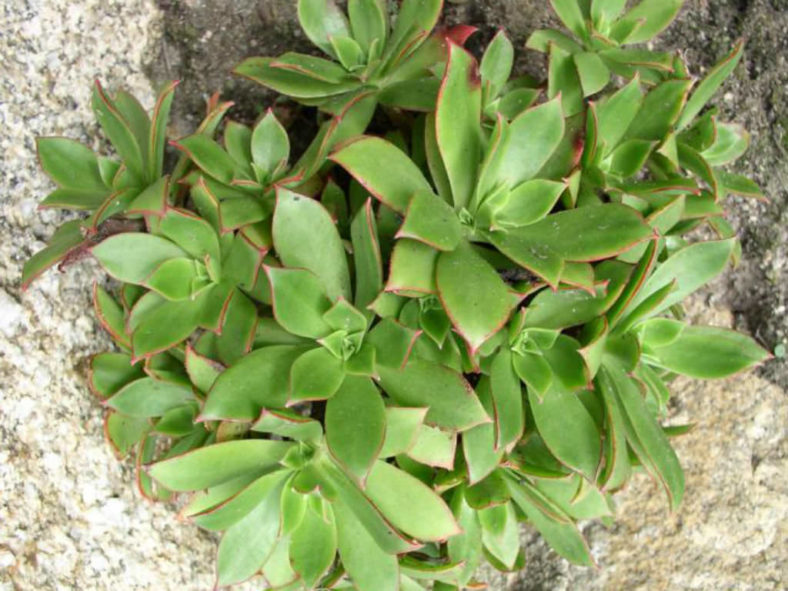Scientific Name
Aeonium decorum Webb ex Bolle
Common Name(s)
Fairy Wings, Green Pinwheel
Synonym(s)
Aeonium decorum var. decorum, Aeonium decorum var. mascaense, Sempervivum decorum
Scientific Classification
Family: Crassulaceae
Subfamily: Sempervivoideae
Tribe: Aeonieae
Genus: Aeonium
Etymology
The specific epithet "decorum" (pronounced "DEK-or-um") means "decorated, adorned; elegant, fine, beautiful" and refers to the leaves of this species, which are usually adorned with red margins.
Origin
Aeonium decorum is native to the Canary Islands.
Description
Aeonium decorum is a small succulent shrub with dark green to yellowish-green leaves arranged in rosettes on thick, ascending or pendent branches. It can grow up to 2 feet (60 cm) tall, while the rosettes can reach a diameter of 4 inches (10 cm). The leaves are often reddish along their margins, measuring up to 2 inches (5 cm) in length and 0.6 inches (1.5 cm) in width.
In late spring or summer, the inflorescences rise above the foliage, bearing small, star-shaped flowers which can be whitish, often pinkish, or reddish.

Forms of Aeonium decorum
How to Grow and Care for Aeonium decorum
Hardiness: USDA hardiness zone 9b to 11b: from 25°F (-3.9°C) to 50°F (10°C).
Aeoniums do not like hot or dry weather. Therefore, they may go dormant in summer and do not require any water, except in arid conditions. In extreme heat, their leaves will curl to prevent excessive water loss. Growing them in moist shade will keep them healthy, but their true growth season is from winter to spring, when temperatures are cool, ranging from 65°F to 75°F (18°C to 24°C), and the air is damp. In winter, water the soil whenever it has dried out—test by poking your finger down into the soil an inch or two. Too much moisture or allowing them to sit in wet soil will cause root rot.
See more at How to Grow and Care for Aeonium.
Propagate Aeoniums by stem cuttings, except for unbranched species that die after flowering and are propagated from seed. Take cuttings when the plant is actively growing, usually in fall in USDA zones 9 through 11. Aeoniums go dormant in summer; cuttings taken while plants are dormant don't root. Each leaf rosette dies after it blooms.
See more at How to Propagate Aeonium.
Links
- Back to genus Aeonium
- Succupedia: Browse succulents by Scientific Name, Common Name, Genus, Family, USDA Hardiness Zone, Origin, or cacti by Genus
Photo Gallery
Click on a photo to see a larger version.


